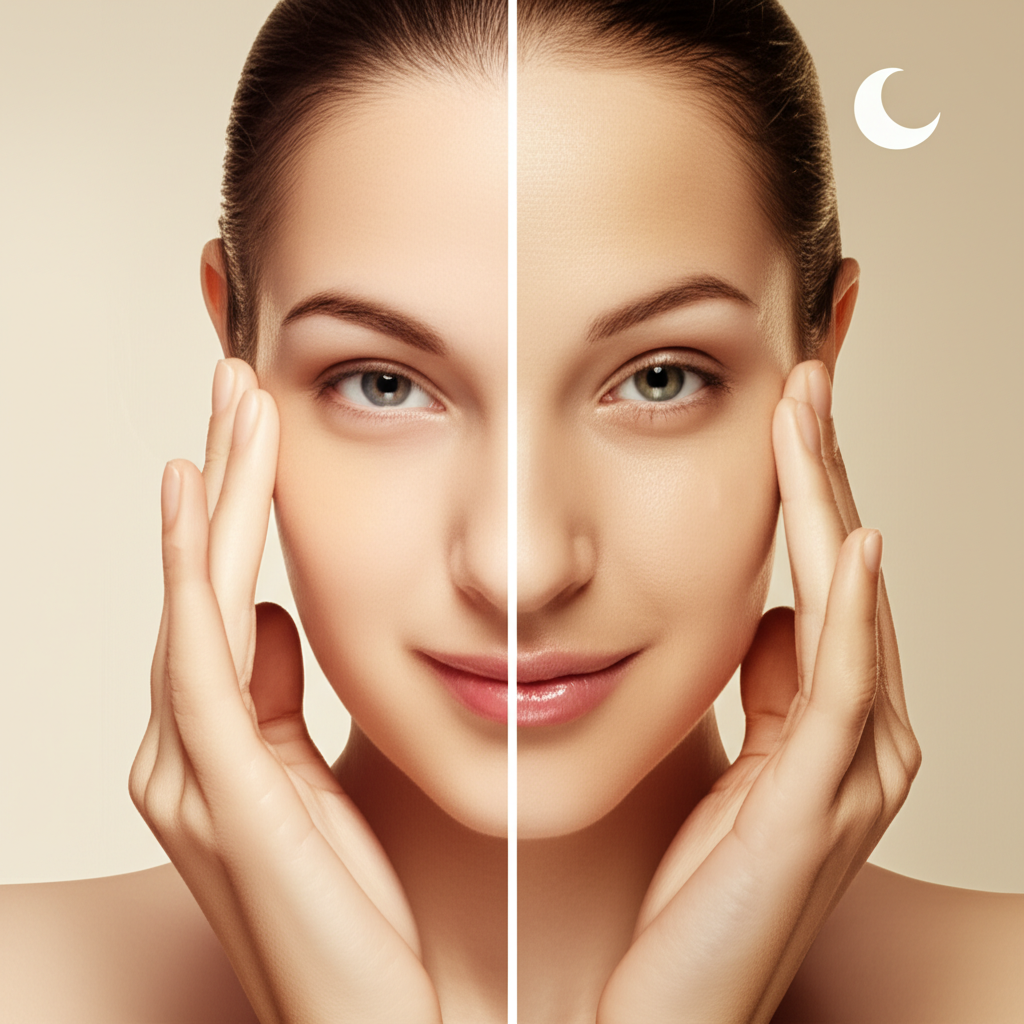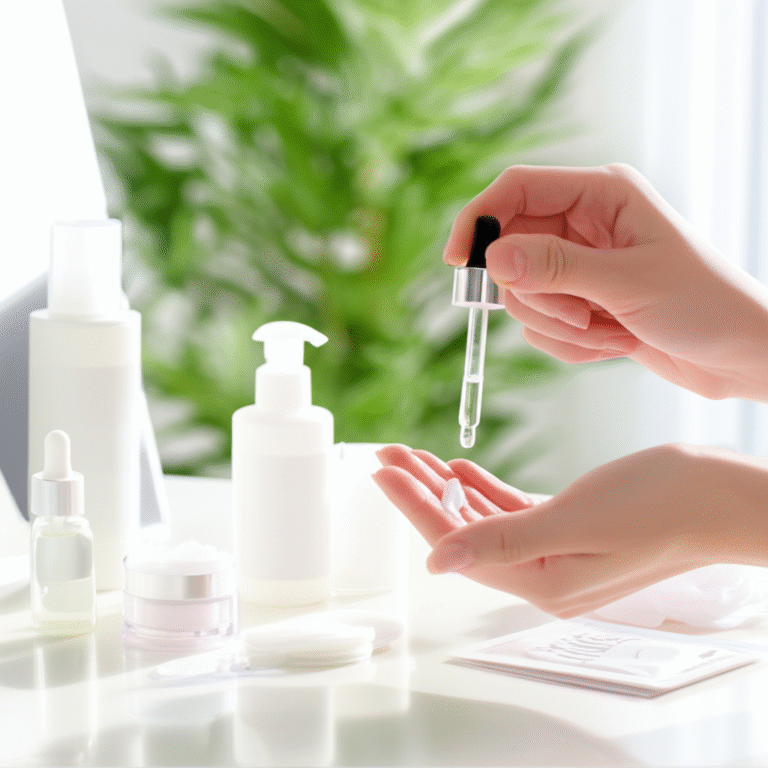Unlock your skin’s natural glow with circadian skin care! Aligning your routine with your body’s 24-hour cycle optimizes repair and protection, leading to visibly healthier, radiant skin. Discover simple, essential steps for a luminous complexion by working with your skin, not against it.
Ever feel like your skin is just… off? Maybe it’s dry in the morning, oily by afternoon, or just doesn’t seem to glow like you want it to, no matter what products you try. You’re not alone! So many of us struggle to find a routine that truly works. The secret might be simpler than you think: it’s all about working with your skin’s natural rhythm. This is where circadian skin care comes in. It’s a revolutionary approach that tunes into your body’s internal clock to give your skin exactly what it needs, when it needs it. Get ready to discover how to effortlessly achieve that coveted healthy glow by embracing your skin’s innate cycles!
What is Circadian Skin Care?

Think of your body like a finely tuned orchestra, with everything playing in harmony according to a schedule. This internal schedule is your circadian rhythm – a 24-hour cycle that influences many of our bodily processes. It tells us when to sleep, when to wake, and even when our skin is primed for repair or needs protection. For a long time, we’ve been slathering on products without considering this crucial internal timing. This is where circadian skin care shines!
Circadian skin care is essentially the practice of aligning your skincare routine with the natural fluctuations in your skin’s biological clock throughout the day and night. Our skin has different needs and capabilities depending on whether the sun is up or down. During the day, your skin’s primary job is to protect itself from environmental aggressors like UV rays and pollution. At night, it enters a regenerative phase, working hard to repair damage, renew cells, and restore itself. By understanding and working with these shifts, we can maximize the effectiveness of our skincare and achieve healthier, more vibrant skin.
This approach isn’t about using complicated, expensive products. It’s about smart, intentional skincare that complements your skin’s natural functions. It’s about understanding when your skin is most receptive to certain ingredients and when it needs targeted support. Ready to dive into how you can integrate this genius approach into your daily life?
Why Your Skin Has a Clock
Your skin, like every other organ in your body, operates on a finely tuned internal clock. This remarkable biological mechanism, known as the circadian rhythm, governs a multitude of physiological processes, including cell regeneration, DNA repair, and skin barrier function. These rhythms are primarily dictated by light and darkness, influencing hormone levels, body temperature, and metabolic activities. The National Institute of General Medical Sciences provides excellent resources on the fundamental science behind these clocks.
During the day, your skin is in “protection mode.” It’s actively working to shield itself from external threats. This includes producing sebum to maintain hydration and a healthy skin barrier, and it’s also more susceptible to UV damage and environmental pollution. Your skin’s natural defense mechanisms are at their peak during sunlight hours.
As night falls and you enter sleep, your skin switches gears. It transitions into “repair and regeneration mode.” This is when your skin cells are most active in repairing daily damage, shedding dead skin cells, and producing new cells. Crucially, your skin also becomes more permeable at night, meaning it’s more receptive to beneficial ingredients. This is why applying certain ingredients before bed can lead to significantly better results.

Furtuna Skin Daily Renewal Cream
Daily Moisturizer with Advanced Skin Hydration Technology – Radiance & Balance Enhancing – 95% Natural – 1.7 Fl Oz
- Brand: Furtuna Skin
- Price: $265.00 $155.88 per fluid ounce
- Shipping to Bangladesh: $28.34
- Size: 1.7 Fl Oz
- Special Features: Antioxidant, Deep Nourishment, Hydration, Clean Beauty
- Ingredients: Olive Leaf Water, Organic Fennel Seed, Organic Lamb’s Quarter, and more
The Benefits of a Circadian Skincare Routine
Embracing a circadian skincare routine can transform your complexion. It’s like giving your skin the perfect support system, exactly when it needs it. Here’s why it’s such a game-changer for achieving that sought-after glow:
- Enhanced Product Efficacy: By applying products when your skin is most receptive, you ensure ingredients are absorbed and utilized more effectively. For instance, ingredients that promote cell turnover or repair are best applied at night when cell activity is high.
- Improved Skin Barrier Function: A healthy skin barrier is crucial for retaining moisture and protecting against irritants. Circadian routines help strengthen this barrier by providing the right support during its natural protective and restorative cycles.
- Reduced Inflammation and Redness: Many skin concerns, like acne and redness, can be exacerbated by stress and environmental factors. Aligning your routine can help calm the skin and reduce inflammation by supporting its natural repair processes.
- Stronger Defense Against Aging: By focusing on protection during the day and repair at night, you can help mitigate environmental damage that contributes to premature aging and boost your skin’s long-term resilience.
- More Radiant and Even Tone: When your skin is properly hydrated, protected, and repaired, its natural radiance shines through. This leads to a brighter, more even-toned complexion over time.
- Better Hydration Levels: The skin’s ability to retain moisture fluctuates. A circadian approach helps maintain optimal hydration by supporting the skin barrier at key times.
Your Genius Essential Routine: Day vs. Night
The core of circadian skin care lies in a simple yet powerful strategy: tailor your routine to your skin’s 24-hour cycle. This means having a dedicated morning and evening ritual, each designed to support your skin’s specific needs during those times.
The Morning (Protection) Routine
Your morning routine is all about preparing your skin to face the day and protecting it from environmental stressors like UV rays, pollution, and blue light emitted from screens. Think of it as putting on your skin’s armor!
Step 1: Gentle Cleansing
Start by gently cleansing your face. Even if you cleansed at night, a quick rinse with a mild, hydrating cleanser removes any residual products or oils that may have accumulated overnight and preps your skin for the next steps. Avoid harsh, stripping cleansers that can compromise your skin’s protective barrier.
Step 2: Hydration Boost
Apply a hydrating serum, especially one with hyaluronic acid, to plump up the skin and lock in moisture. This creates a smooth canvas and helps your moisturizer work more effectively. Hyaluronic acid is excellent for attracting and retaining moisture, keeping your skin supple throughout the day.
Step 3: Antioxidant Power
This is a crucial step for daytime. Apply a serum rich in antioxidants, like Vitamin C. Antioxidants act like tiny shields, neutralizing free radicals generated by UV exposure and pollution. This helps prevent oxidative stress, which can lead to premature aging and dullness. The University of Maryland provides insights into the protective roles of antioxidants in skin health.
Step 4: Moisturize (Lightweight)
Follow with a lightweight, non-greasy moisturizer. This seals in hydration and provides a protective layer. Look for formulas that suit your skin type – gel creams for oily or combination skin, and richer lotions for drier skin.
Step 5: Sun Protection (Non-Negotiable!)
This is the most critical step of your morning routine. Apply a broad-spectrum sunscreen with at least SPF 30. Sunscreen protects your skin from harmful UVA and UVB rays, which are major contributors to skin aging, dark spots, and skin cancer. Reapplication throughout the day is key if you’re exposed to direct sunlight.
The Evening (Repair) Routine
Your evening routine is dedicated to removing the day’s buildup and supporting your skin’s natural repair and regeneration processes while you sleep. This is when your skin is most receptive to powerful ingredients.
Step 1: Thorough Cleansing (Double Cleanse Recommended)
Begin by removing makeup and sunscreen with an oil-based cleanser or micellar water. This effectively breaks down oil-based impurities. Follow with a water-based cleanser to remove any remaining residue and cleanse the skin itself. This double cleansing ensures a perfectly clean canvas for your treatment products.
Step 2: Treatment Serums
This is the prime time for potent active ingredients that promote cell turnover, boost collagen, and target specific concerns.
- Exfoliants: AHAs (like glycolic or lactic acid) and BHAs (like salicylic acid) help to slough off dead skin cells, revealing brighter skin and preventing clogged pores. Start with a lower frequency (2-3 times a week) and gauge your skin’s tolerance.
- Retinoids: Prescription retinoids or over-the-counter retinol are gold standards for anti-aging and acne. They accelerate cell turnover and stimulate collagen production.
- Peptides and Growth Factors: These ingredients support skin repair and collagen synthesis.
It’s important not to overdo it – choose one or two key treatments based on your skin type and concerns. The American Academy of Dermatology offers comprehensive information on treatments like retinoids.
Step 3: Hydration and Nourishment
After your treatment serums have absorbed, apply a richer, more nourishing moisturizer to support your skin’s overnight repair processes and prevent moisture loss. Ingredients like ceramides, fatty acids, and plant oils can help strengthen the skin barrier.
Step 4: Eye Cream (Optional but Recommended)**
The skin around your eyes is thinner and more delicate, often showing the first signs of aging. An eye cream formulated with ingredients like peptides or retinol can help hydrate and address concerns like fine lines and dark circles.
Step 5: Lip Care
Don’t forget your lips! Apply a nourishing lip balm to keep them hydrated overnight, especially if you’re using harsh acne treatments or live in a dry climate.
Key Ingredients for Circadian Skin Care
Certain ingredients work exceptionally well when used at specific times of the day. Understanding these pairings can elevate your circadian skincare game.
| Ingredient | Best Time to Use (Circadian Focus) | Why it Works | Beginner Tip |
|---|---|---|---|
| Vitamin C | Morning | Potent antioxidant that neutralizes free radicals from UV exposure and pollution, protecting skin during the day. | Start with a 10-15% solution and use a few times a week if you have sensitive skin. |
| Hyaluronic Acid | Morning & Night | Attracts and retains moisture, keeping skin hydrated and plump all day and supporting overnight repair. Lightweight and suitable for most skin types. | Can be layered under almost any serum or moisturizer for an extra hydration boost. |
| Sunscreen (SPF 30+) | Morning (Crucial!) | Protects skin from damaging UV rays, preventing premature aging, dark spots, and skin cancer. | Apply generously as the last step of your morning routine. Reapply every 2 hours when outdoors. |
| AHAs/BHAs (Acids) | Night | Exfoliate dead skin cells, improve texture, unclog pores, and promote cell turnover for brighter, clearer skin. | Begin 1-2 nights a week on clean, dry skin. Always follow with moisturizer. |
| Retinoids (Retinol, Retinal, Prescription Tretinoin) | Night | Increases cell turnover, stimulates collagen production, reduces wrinkles, and treats acne. | Start with a low concentration (0.1-0.3% retinol) 1-2 nights a week. Gradually increase frequency as tolerated. Always use SPF the next day. |
| Peptides | Night | Support skin repair, boost collagen production, and help improve skin firmness and elasticity. | Excellent for targeting fine lines and can be layered with other treatment serums. |
| Ceramides/Niacinamide | Night (Moisturizer) | Strengthen the skin barrier, reduce inflammation, improve hydration, and support overall skin health during its repair cycle. | Look for them in your evening moisturizer for added barrier support. |
Adapting Your Routine for Your Skin Type
While the circadian principles remain the same, you’ll want to adjust product types to suit your specific skin. Here’s a quick guide:
- Oily / Acne-Prone Skin:
- Morning: Opt for oil-free, gel-based cleansers and lightweight, non-comedogenic moisturizers. Look for toners with salicylic acid (BHA) if needed, but apply cautiously.
- Evening: Double cleanse effectively. Focus on treatments like salicylic acid to keep pores clear and retinoids to manage breakouts and improve texture.
- Dry / Dehydrated Skin:
- Morning: Use a creamy, hydrating cleanser. Layer hydrating serums (like hyaluronic acid) with a rich moisturizer. Your sunscreen can also provide added moisture.
- Evening: A nourishing balm or oil cleanser is great for the first cleanse. Follow with hydrating and barrier-repairing ingredients like ceramides and niacinamide in your moisturizer. Consider a gentle exfoliant like lactic acid.
- Combination Skin:
- Morning: A balancing cleanser is ideal. Use a lightweight moisturizer on oily areas (like the T-zone) and a slightly richer one on drier patches.
- Evening: Double cleanse. You might use a BHA on oily zones for exfoliation and a hydrating serum on drier areas. A good all-around moisturizer will likely work well.
- Sensitive Skin:
- Morning: Stick to the gentlest cleansing. Focus on hydration and broad-spectrum SPF. Avoid potential irritants in your morning routine.
- Evening: Introduce potent actives like exfoliant acids or retinoids very slowly. Start with 1-2 times a week and always patch-test new products. Hydrating and soothing ingredients are key.
Common Mistakes to Avoid
Even with the best intentions, it’s easy to slip up when starting a new routine. Here are common pitfalls to watch out for when embracing circadian skincare:
- Over-Exfoliating: Using harsh acids or physical scrubs too frequently can strip the skin, damage the barrier, and lead to increased sensitivity, redness, and breakouts. Stick to 2-3 times a week, max, especially when starting.
- Using Actives in the Morning: Many powerful ingredients, especially retinoids and AHAs/BHAs, can increase photosensitivity. Applying them during the day can make your skin more prone to sun damage and irritation. Reserve them for your nighttime routine.
- Skipping Sunscreen: This is the cardinal sin of daytime skincare. Even on cloudy days, UV rays can penetrate and cause damage. Make SPF your daily non-negotiable.
- Not Cleansing Properly at Night: Not thoroughly removing makeup, sunscreen, and daily grime means your treatment products can’t penetrate effectively and can lead to clogged pores and breakouts.
- Introducing Too Many New Products at Once: This can overwhelm your skin and make it hard to identify which products are causing irritation or delivering results. Introduce one new product at a time and give your skin at least a week or two to adjust.
- Ignoring Your Skin’s Signals: If your skin is feeling irritated, dry, or red, it’s a sign to dial back. Perhaps you’re using too many actives, too much exfoliation, or a product that just doesn’t agree with you. Listen to your skin!
Listen to Your Skin: Professional Advice
While these routines are designed to be beginner-friendly, it’s always wise to consult with a dermatologist or licensed aesthetician, especially if you have specific skin concerns or conditions like persistent acne, rosacea, or eczema. They can help you identify the right products and ingredients for your unique skin and ensure you’re using them safely and effectively. The Skin Cancer Foundation also emphasizes tailoring sun protection strategies to individual needs.
Frequently Asked Questions (FAQ)
Q1: What is the most important part of circadian skincare?
A1: The most crucial elements are consistency and tailoring your routine to the time of day. In the morning, prioritize protection, especially with SPF, to shield your skin from UV damage and pollution. At night, focus on repair with treatment ingredients like retinoids or AHAs. Listening to your skin’s needs is also vital, adjusting your routine if any irritation or dryness occurs.
Q2: Can I use Vitamin C at night?
A2: While Vitamin C is primarily recommended for morning use due to its antioxidant properties, some forms of Vitamin C can be used at night. However, its most significant benefit is during the day as it helps protect against environmental damage from UV rays and pollution.
Q3: How often should I exfoliate?
A3: For most beginners, 1-3 times per week is sufficient. Over-exfoliation can damage your skin barrier and lead to irritation, dryness, or breakouts. Start slowly with lower concentrations of AHAs or BHAs and gradually increase frequency as your skin adapts.
Q4: What if I have sensitive skin – can I still use a circadian skincare routine?
A4: Yes! Sensitive skin can greatly benefit from a circadian skincare routine. However, be cautious when introducing active ingredients like AHAs or retinoids. Start with gentler, hydrating products in your routine and introduce actives gradually. Always patch-test new products and listen to your skin.
Q5: Is circadian skincare suitable for all skin types?
A5: Absolutely! Circadian skincare is designed to complement your skin’s natural rhythm, making it suitable for all skin types. Whether you have oily, dry, combination, or sensitive skin, you can tailor your routine to meet your skin’s specific needs throughout the day and night.
End Remarks
In conclusion, circadian skincare is a revolutionary approach that helps you work with your skin’s natural rhythm, providing it with the care it needs at the right time. By aligning your routine with your skin’s biological clock, you maximize the effectiveness of your products, ensuring healthier, more radiant skin. Remember, consistency is key. Prioritize protection during the day and repair at night to support your skin’s natural functions. Whether you’re a beginner or seasoned skincare enthusiast, adopting a circadian skincare routine can help you unlock your skin’s natural glow. With patience and the right products, you’ll be well on your way to achieving the luminous complexion you desire.



